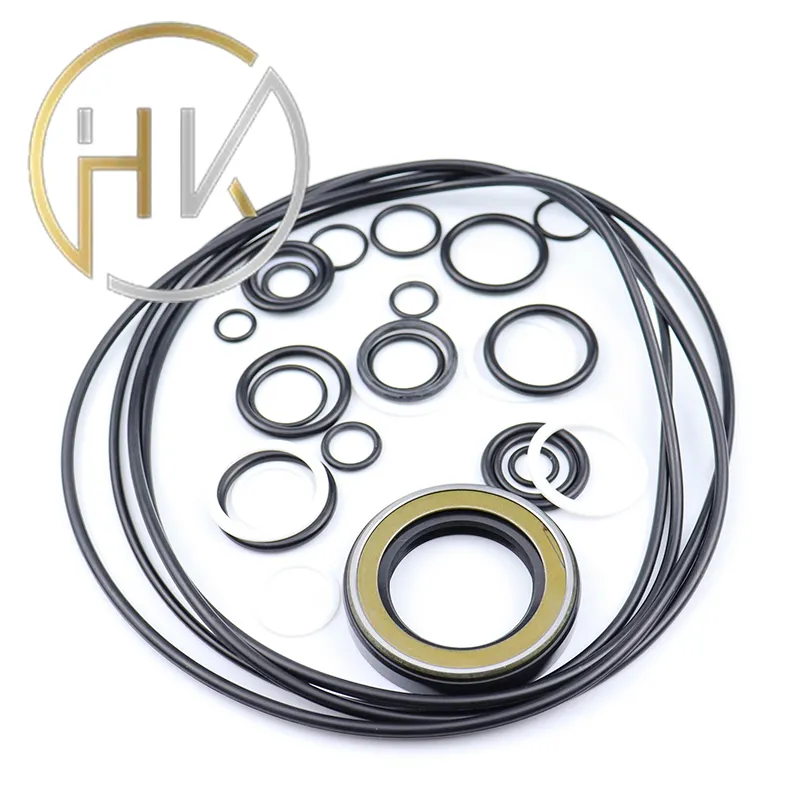дец . 01, 2024 15:49 Back to list
forklift hydraulic cylinder seals
Understanding Forklift Hydraulic Cylinder Seals Importance, Types, and Maintenance
Hydraulic systems play a crucial role in the operation of forklifts, enabling the lifting and lowering of heavy loads with ease and precision. At the heart of these systems are hydraulic cylinders, which convert hydraulic energy into mechanical force. Essential to the efficiency and longevity of hydraulic cylinders are their seals, which prevent fluid leaks, reduce wear, and maintain system pressure. This article delves into the importance of forklift hydraulic cylinder seals, the various types available, and best practices for maintenance.
Importance of Hydraulic Cylinder Seals
Hydraulic cylinder seals are critical components that ensure the effective functioning of hydraulic systems in forklifts. They fulfill several roles
1. Leak Prevention One of the primary functions of hydraulic seals is to prevent hydraulic fluid from leaking out of the cylinder. Leaks not only result in the loss of hydraulic fluid, which can be costly, but they also diminish the efficiency of the forklift's hydraulic system, causing performance issues.
2. Pressure Maintenance Seals help to maintain the internal pressure of the hydraulic cylinder. This is vital for the cylinder to operate effectively, as fluctuations in pressure can lead to erratic lift operations or even equipment failure.
3. Contamination Protection Seals keep contaminants like dust, dirt, and moisture out of the hydraulic cylinder, which could otherwise degrade the hydraulic fluid and components. This protection is crucial for maintaining the health and performance of the forklift.
4. Wear Reduction Good seals help reduce friction between moving parts within the hydraulic cylinder. This not only prolongs the life of the cylinder but also enhances the overall performance of the forklift.
Types of Hydraulic Cylinder Seals
There are various types of seals used in hydraulic cylinders, each designed for specific applications and conditions. Some of the most common types include
1. O-Rings O-rings are simple yet effective seals that can be used in a variety of applications. They are circular in shape and designed to fit into a groove, creating a seal against pressure. Their flexibility and affordability make them a popular choice for many hydraulic systems.
2. Backup Rings Often used in conjunction with O-rings, backup rings provide additional support and prevent the O-ring from extruding when under high pressure. This helps to ensure a longer lifespan for the sealing components in high-load applications.
forklift hydraulic cylinder seals

3. Rod Seals These seals are specifically designed for the piston rod and are crucial in preventing fluid leakage out of the cylinder. They are available in various designs, including single lip, double lip, and wiper seals, each serving specific functions in the hydraulic system.
4. Piston Seals Piston seals are used to contain hydraulic fluid in the cylinder and are responsible for transferring force. Like rod seals, they come in multiple designs tailored for different pressures and fluid types.
Maintenance Practices for Hydraulic Cylinder Seals
To ensure the longevity and efficiency of hydraulic cylinder seals, regular maintenance is essential. Here are some best practices
1. Regular Inspection Periodic checks of the hydraulic system can help identify signs of wear or damage to seals. Look for signs of leaking fluid or contamination, which may indicate that seals need replacement.
2. Cleanliness Maintaining a clean working environment is vital. Contaminants can wear down seals and hydraulic components. Regular cleaning of the hydraulic system, including the cylinder and surrounding areas, can significantly extend seal life.
3. Fluid Quality Use high-quality hydraulic fluid that meets the specifications required for your forklift. Contaminated or incorrect fluid can lead to seal degradation and system failure.
4. Correct Installation Proper installation of seals is crucial. Incorrect installation may lead to premature failure or leaks. Always follow manufacturer guidelines when replacing or installing seals.
5. Monitoring Performance Keep an eye on the performance of the hydraulic system. Any changes in performance, such as slower lifting speeds or unusual noises, may indicate issues with seals or other components.
Conclusion
In conclusion, hydraulic cylinder seals are indispensable for the efficient and reliable operation of forklifts. Understanding their importance, recognizing the different types, and adhering to maintenance practices can help enhance the performance and lifespan of hydraulic systems. Investing time and effort in seal maintenance not only ensures smooth operations but can also lead to cost savings through reduced downtime and repair expenses. By prioritizing the health of hydraulic seals, forklift operators can maximize productivity and equipment longevity in their operations.
-
The Trans-formative Journey of Wheel Hub Oil Seals
NewsJun.06,2025
-
Graphene-Enhanced Oil Seals: Revolutionizing High-Pressure Oil Sealing
NewsJun.06,2025
-
Future of Hydraulic Sealing: Advanced Intelligent TCN Oil Seals
NewsJun.06,2025
-
Don’t Let a Broken TCV Oil Seal Ruin Your Day
NewsJun.06,2025
-
Bio-Inspired Dust Seals for Better Sealing Performance
NewsJun.06,2025
-
Biodegradable and Sustainable Hydraulic Seal Materials
NewsJun.06,2025
-
Top Oil Seal Solutions for Your Industrial Needs
NewsMay.22,2025
Products categories
















